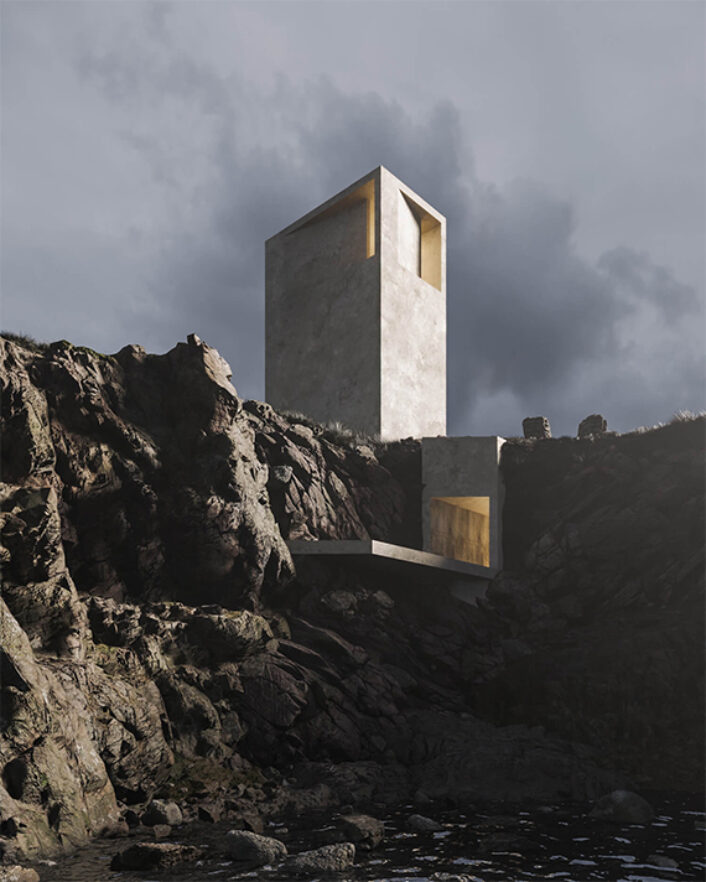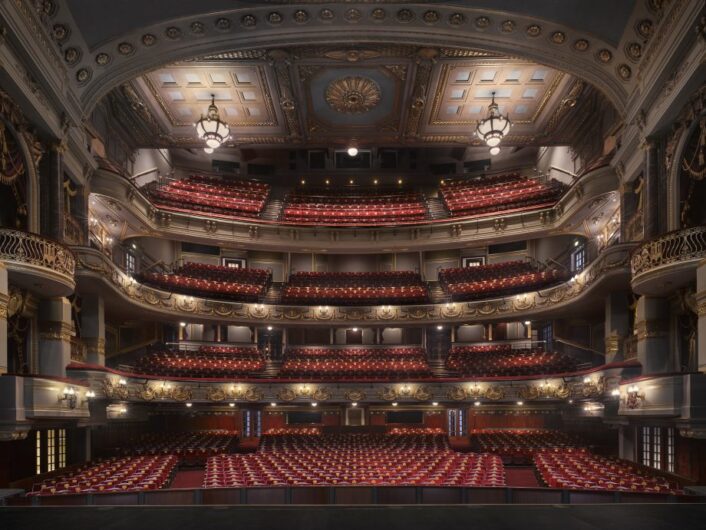Architecture
The surprising history behind the Minack Theatre
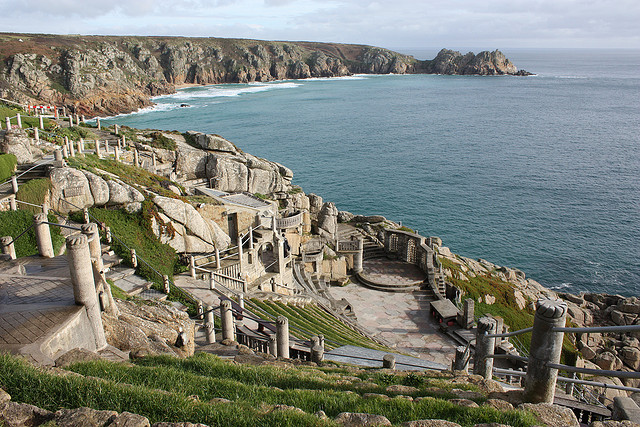
The theater has a capacity of 750.
Image courtesy of: Kuriositas
Not surprisingly, most people have never heard of Cornwall’s Minack Theatre. Perhaps that is because the location is a well-guarded secret by those who have been fortunate enough to experience the magic of the theater’s open-air summer shows. The Minack Theatre debuted its first show ninety years ago.. and little has changed within since that time.
The iconic landmark was created by Rowena Cade’s dream, a generous local who had been living in the area since the early 1920s. Cade bought the land for £100; it is here that she built Minack House, her home that is perched on the rugged cliffs of South-West Cornwall at Porthcurno Bay.
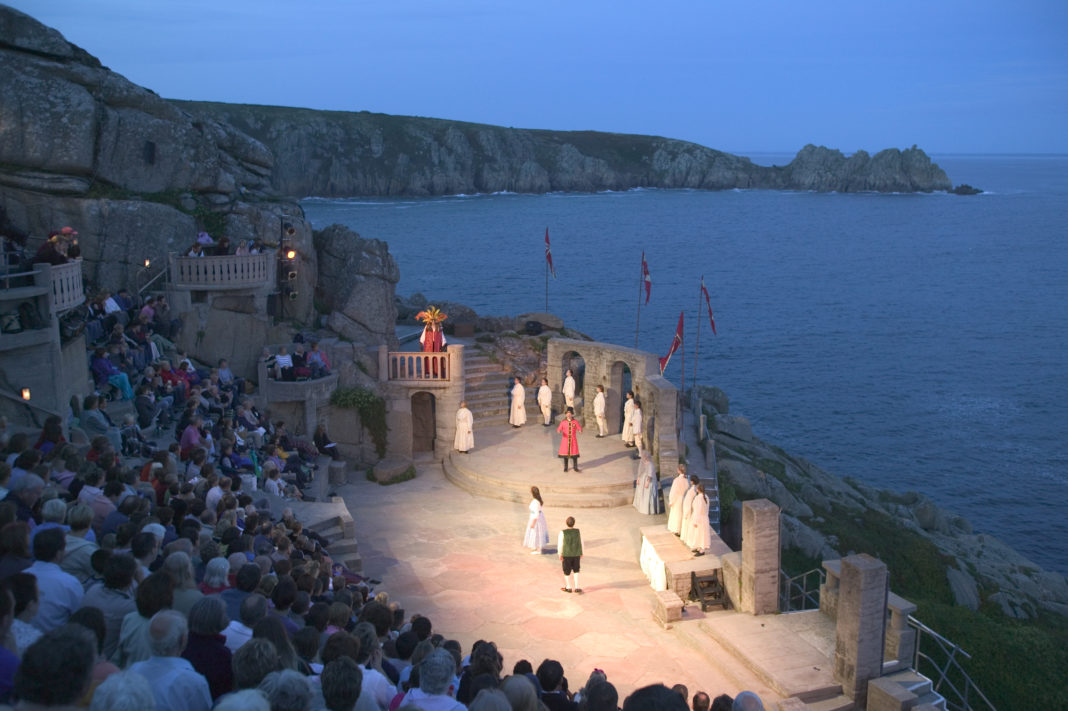
A show at night…
Image courtesy of: The English Home
In 1929, the open-air production of Shakespeare’s A Midsummer Night’s Dream proved to be an enormous success; Cade had been very involved in the production. Due to the play’s success, the company decided to repeat the production the following year. Hoping to perform The Tempest, Cade offered her cliff garden for the complicated performance. With the stage location set, Cade needed to figure out where to seat the audience.
Ninety years later, it is quite incredible what Cade and her small team, among which her gardener Billy Rawlings, created in England… the Minack Theatre’s most unexpected, permanent, and open-air theater venue.
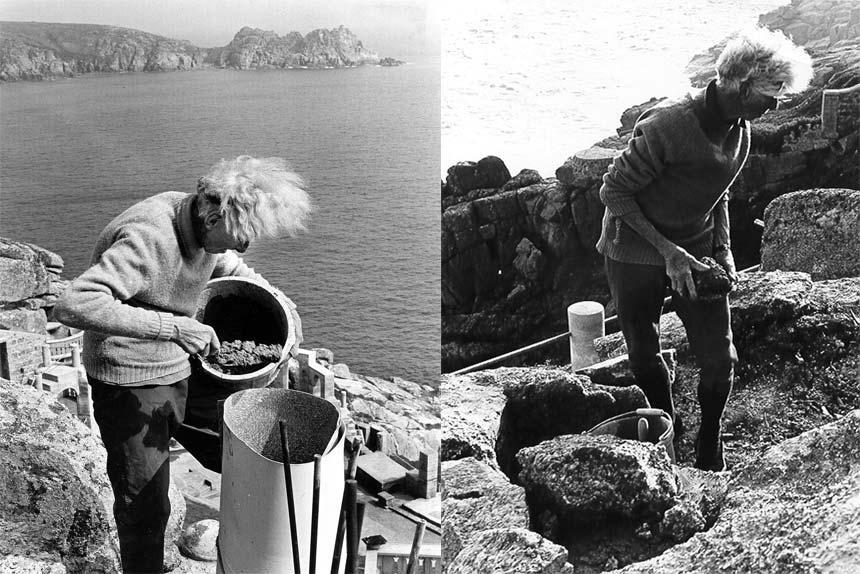
Cade constructing pillars in the 1970s.
Image courtesy of: Minack
The theater was built without any heavy machinery or diggers; rather, Cade and her small team used only hand tools, and sometimes a stick of dynamite, to shape the theater. The process was understandably complicated. In order to form the theater’s base, the team excavated tons upon tons of earth and rock in the winter of 1931-1932.
Per Cade’s description of the construction’s beginning stages (courtesy of the Theatre’s website), “… my gardener, Billy Rawlings, [and] another Cornishman cut up [huge boulders] by hand, much as the English cut butter. A few slices fell into the [sea] as they split, followed by some good dialect expressions of regret; most were handled into position inch by inch with bars, on the slippery slope where a careless step would have meant a ninety foot fall into the churning sea. I filled in behind them with earth and small stones.”
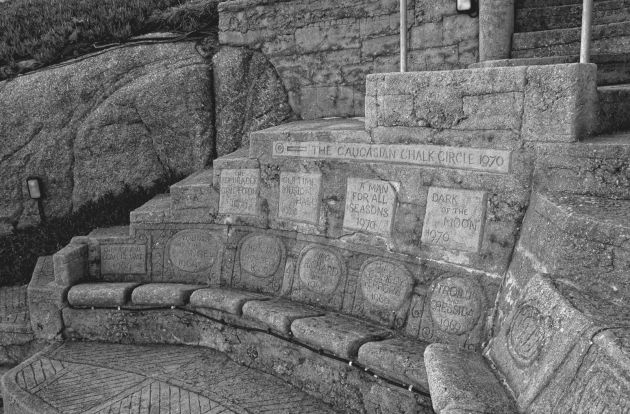
The seats have a history all of their own!
Image courtesy of: Cornwall Guide
Cade spent most of her life building the Minack Theatre. To this day, some of the structures still standing are created from the concrete that was mixed with sand from the nearby beach… Cade herself carried the concrete up the cliff in sand-sacks. In addition to an unofficial builder, Cade was also an artist. Her mastery is present in the details she left throughout the theater.
Specifically, Cade etched intricate designs into the wet concrete with an old, well-loved screwdriver. Many of the seats have the names and dates of the plays performed on sight etched into the stone. Cade worked on her theater well into her eighties… it is clear that she never anticipated the complex and involved process. This is evident as stated by the creative regarding the work (courtesy of ITV) “a good enough, rough and ready job for what we thought would be one week of playing.”

In a wheelbarrow… Cade on site!
Image courtesy of: BBC
The cliff garden has been often described as a “paradise.” The individual terraces hold small patches of plants that survive because they are essentially living in their own microclimate. The plants planted at the theater are from South Africa, the Mediterranean, and South America. Although the soil is far from ideal, the low pollution, high UV, and reflections off the sea makes it a perfect environment.
Currently, preserving the theater for the next ninety years is the challenge. Zoe Curnow, Minack Theatre’s executive director said, “There’s no reason why this can’t last for many more years to come. We’re built out of a great substance. Actually, sitting here in the corner of this cliff, and we very much looking at how to preserve the Minack and take it forward but within respect for the environment.” Even though Cade did not build her masterpiece with the intention of it surviving for decades, there is no reason that won’t happen. The Minack Theatre’s legacy needs to live on for many more increments of ninety years!
